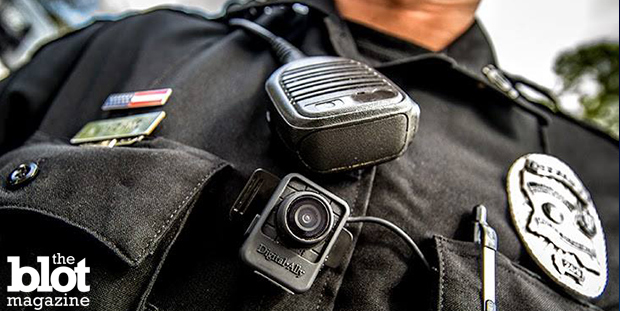California police officers equipped with body-worn cameras are engaging in less force during encounters with citizens, according to a report.
The San Francisco Chronicle reported earlier this week that law enforcement records in two cities — Oakland and Menlo Park — pointed to a significant drop in use of force incidents since some officers began wearing body cameras during their shift. The paper reported use-of-force incidents were down 72 percent in Oakland since officers there began wearing body cameras in 2010. Oakland’s police department currently has 700 body cameras, more than any law enforcement agency in the country, the Chronicle noted.
Similarly, force reports fell in other California towns — including Brentwood, Menlo Park and Campbell — since officers in those areas began wearing body cameras. In Menlo Park, records reviewed by the Chronicle found that force incidents were down more than 30 percent in the three years its police officers had been wearing the cameras.
The numbers point to a promising trend as the Obama administration continues to push for law enforcement agencies across the country to purchase and equip officers with body-worn cameras.
Supporters of initiatives to further equip police with body cameras have pointed to recent use-of-force incidents involving citizens who have died during police encounters, some of which involved officers who were criminally charged only after video surfaced of the fatal events.
Read more: NYPD to Be Armed with Cameras, But Will It Cuff Them In the End?
In April, Officer Michael Slager was charged with murder for killing 50-year-old Walter Scott during a traffic stop. South Carolina’s state law enforcement agency launched an investigation into Slager after he claimed Scott had reached for the officer’s taser during the encounter, which ended in a nearby park. The officer was charged after cellphone video captured by a witness was published by a newspaper that showed Slager firing at Scott as the man was attempting to flee, contradicting the officer’s earlier claim.
Scott’s shooting prompted Congressional lawmakers to hold a hearing on the effectiveness of law enforcement wearing body cameras. In a letter requesting the hearing, Sen. Tim Scott (R-S.C.) pointed to a study that showed a significant drop in force by officers equipped with body cameras, and said the video evidence in the Walter Scott shooting was “undeniable.”
On Wednesday, lawmakers in South Carolina passed a bill that would approve additional funding for police departments in the state to obtain body cameras. The bill, named after Walter Scott, would require the state to study the effectiveness of body cameras for six months before funding would flow to law enforcement agencies; a similar bill in the state’s senate would fast-track the process at a cost of around $3.4 million.
In California, San Francisco Mayor Ed Lee pledged more than $6 million for city police officers to be equipped with the cameras, while the San Francisco Sheriff’s Department announced a smaller program to equip some of its deputies with the technology. The Sheriff’s department program will allocate just $50,000 for the purchase of 30 body-worn cameras, while the city’s plan would provide around 60 times that amount, the Chronicle said.
Matthew Keys is a contributing journalist for TheBlot Magazine.






